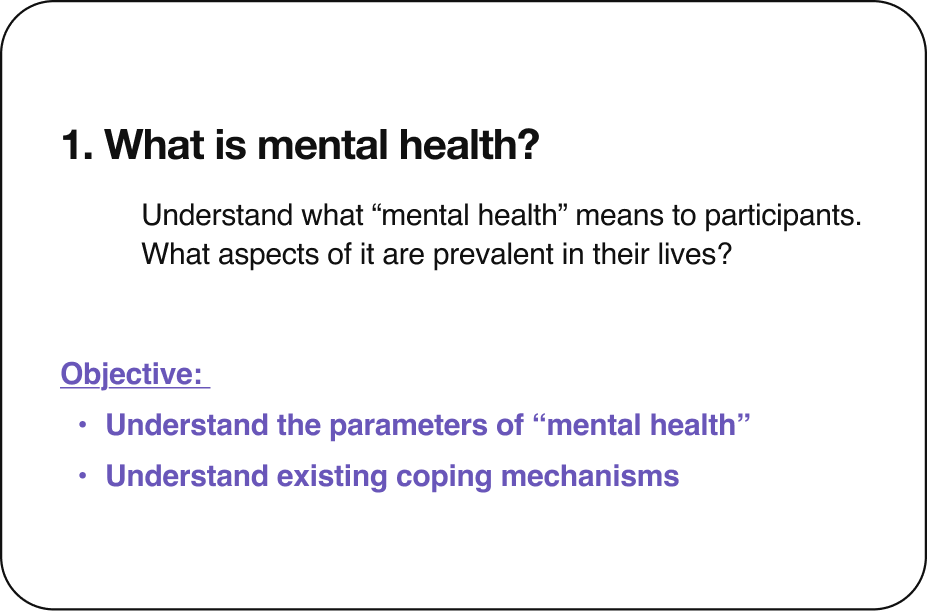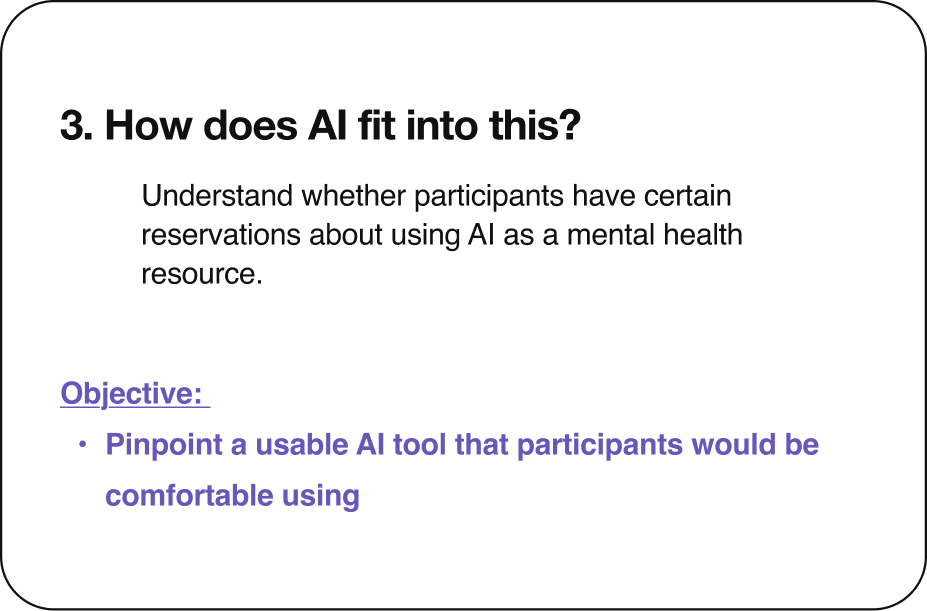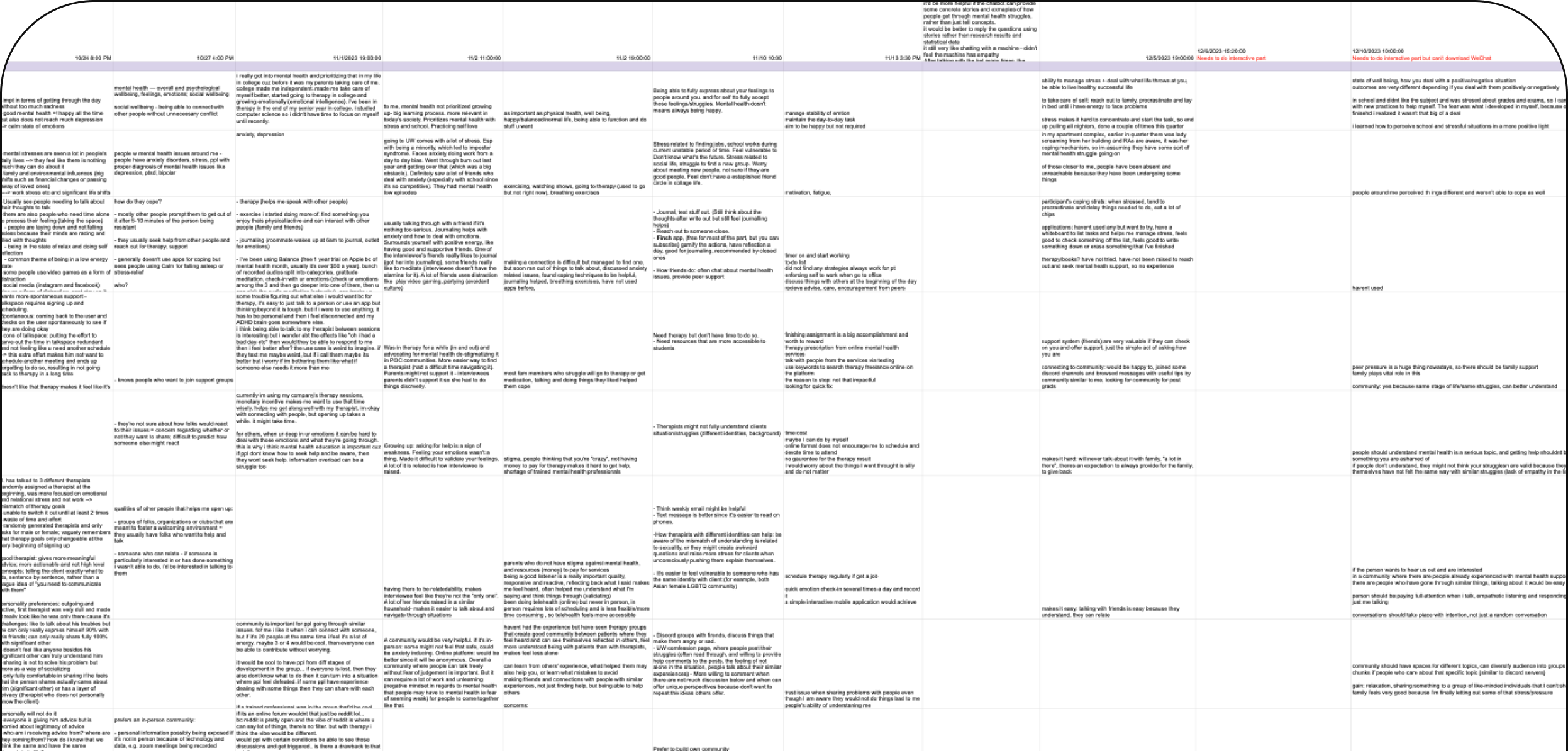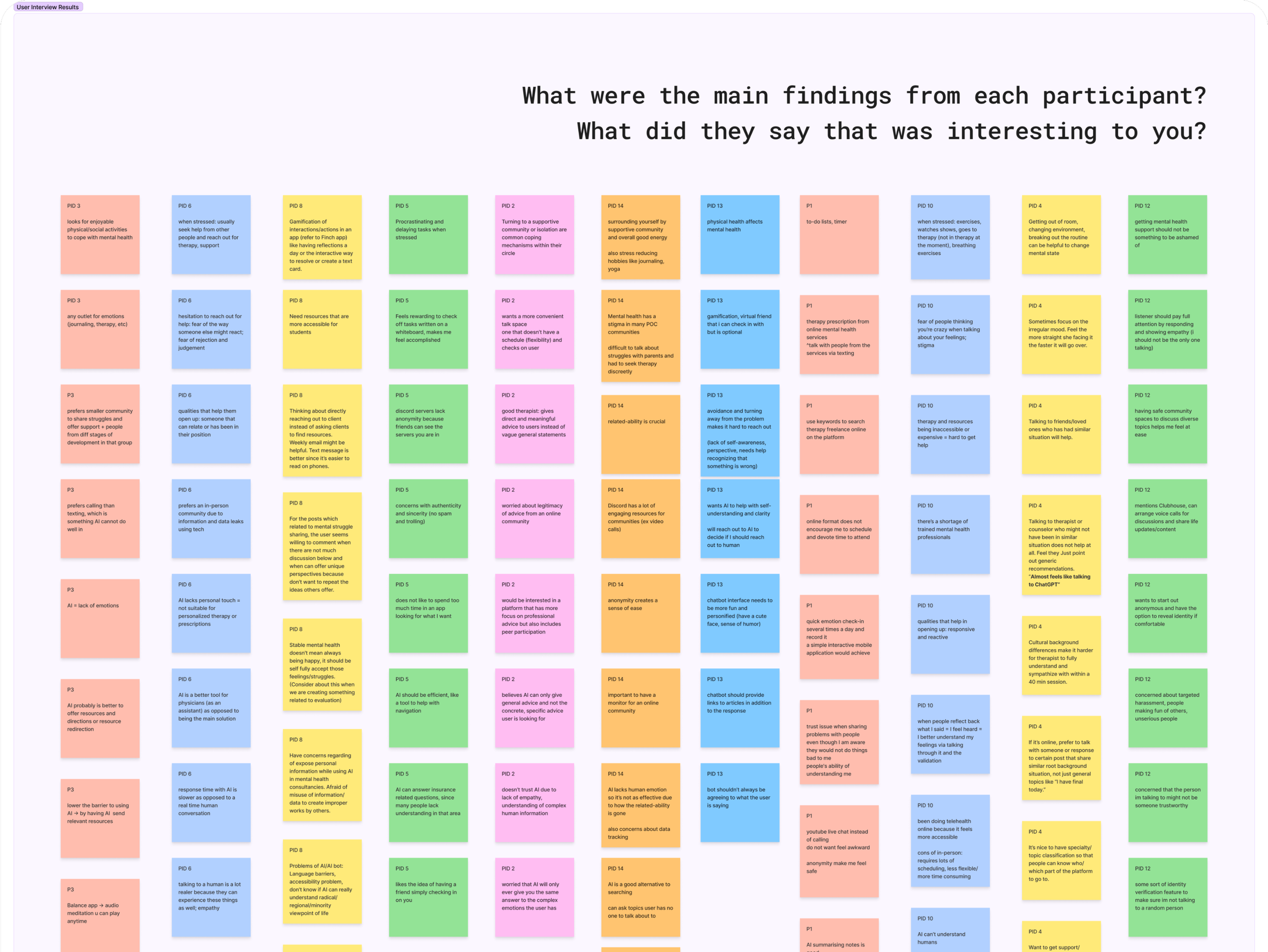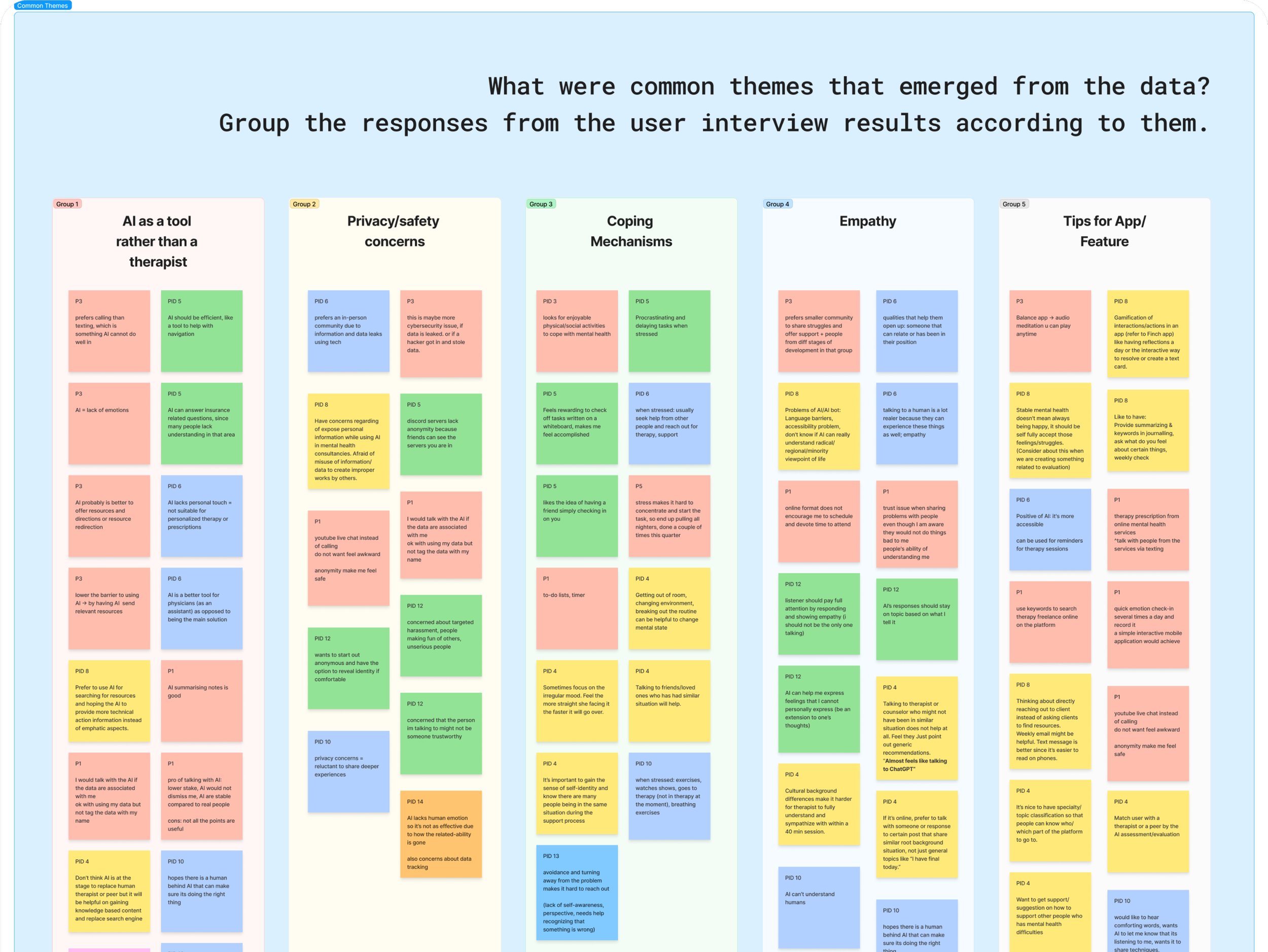AIMHealth Innovation Lab
GLOW: An AI chatbot that delivers DBT support through conversational therapy
DESCRIPTION
GLOW AI is an evidence-based chatbot designed to support emotional regulation using DBT and chain analysis. As a UX Designer and Research Assistant, I helped bridge user needs and clinical practices to develop a more trustworthy AI mental health tool.
CONTEXT
AI-powered mental health chatbots often lack clinical validation and struggle to deliver consistent, empathetic, and digestible support. Our team set out to design a more grounded solution rooted in Dialectical Behavior Therapy (DBT) techniques and user research to offer support to both the patient and clinician.
MY ROLE
TOOLS
UX Researcher & UX Designer
Figma
Figjam
Problem
Existing AI-powered mental health chatbots lack the involvement of trained mental health professionals, resulting in fragmented therapeutic frameworks and unvalidated effectiveness in improving user well-being.
Proposed Solution
To address these gaps, there is a need for an evidence-based chatbot incorporating clinical tools like Dialectical Behavior Therapy (DBT) techniques and user engagement research to deliver personalized, effective, and sustained behavioral interventions
User Interviews
What are we trying to learn?
13
User Interviews
were conducted to understand (1) how they define mental health, (2) what effective support looks like, and (3) how they feel about AI’s role in that space.
Our research surfaced key themes around empathy, agency, and discomfort with AI as a full substitute for a therapist.
Organizing the Chaos
1. Jotting down valuable statements for each participant
2. Affinity Mapping: Grouping users’ statements depending on common themes
Key Takeaway
A majority of participants had similar beliefs that:
AI would be better suited serving as a complementary tool for therapy than being the therapist itself.
The largest factor that goes into effective mental health support is empathy.
We brainstormed everything from self-tracking journals to structured skill modules. But it was only after reflecting on users' desire for timely, ongoing, and emotionally attuned interaction that we started gravitating toward:
Exploring the Right Form of Intervention
a conversational interface.
The chatbot format emerged as the best way to:
Deliver DBT-based tools contextually
Offer a channel to flag high-risk moments for therapist review
Not give an AI tool full autonomy over patient care
Create space for both independent reflection and clinical oversight
The Features
Onboarding
Because GLOW supports users through sensitive and vulnerable moments, establishing trust from the first interaction is essential.
Our goals:
Incorporate a friendly and informative tone
Break down medical and therapeutic jargon for increased awareness and understanding
Prevent misuse and misinformation upon activation of GLOW
From Chat to Chain
The heart of GLOW is its ability to transform everyday conversations into structured behavioral insights.
Using principles from Dialectical Behavior Therapy (DBT), GLOW guides users through a chain analysis, a visual breakdown that maps out the sequence of events, thoughts, and emotions leading to a problem behavior.
This feature not only surfaces patterns but also generates actionable recommendations, empowering users to understand and interrupt harmful cycles.
Edit Mode
Users can directly edit their chain analysis, giving them precise control over which part of the behavioral sequence they want to modify, eliminating the need to rephrase changes through conversation.
Exporting
The export feature enables users to download and share their chain analyses, helping them carry their progress beyond the chat.
Whether for therapy sessions or self-tracking, this allows users to take ownership of their emotional growth journey.
Lessons Learned
We learned that while giving users full flexibility to edit their chain analyses can empower them, too much control at once can overwhelm users, especially in emotionally charged moments. To reduce cognitive load, we redesigned the flow to guide users step-by-step through reflection via chat first. Users only gain the ability to directly edit the chain once they’ve walked through their thoughts and behaviors with GLOW.
1. Balancing user freedom and guided control was a key challenge.
Early in the process, we encountered recurring misunderstandings about the purpose and structure of a chain analysis—what it should represent, and which design directions could misinterpret DBT principles. Ongoing consultation with our lead professor, Dr. Liying Wang, and close collaboration with the backend team helped bridge the gap between clinical accuracy and user-centered design, ensuring the final product remained both therapeutically sound and technically feasible.
2. Clinical alignment requires continuous collaboration.

